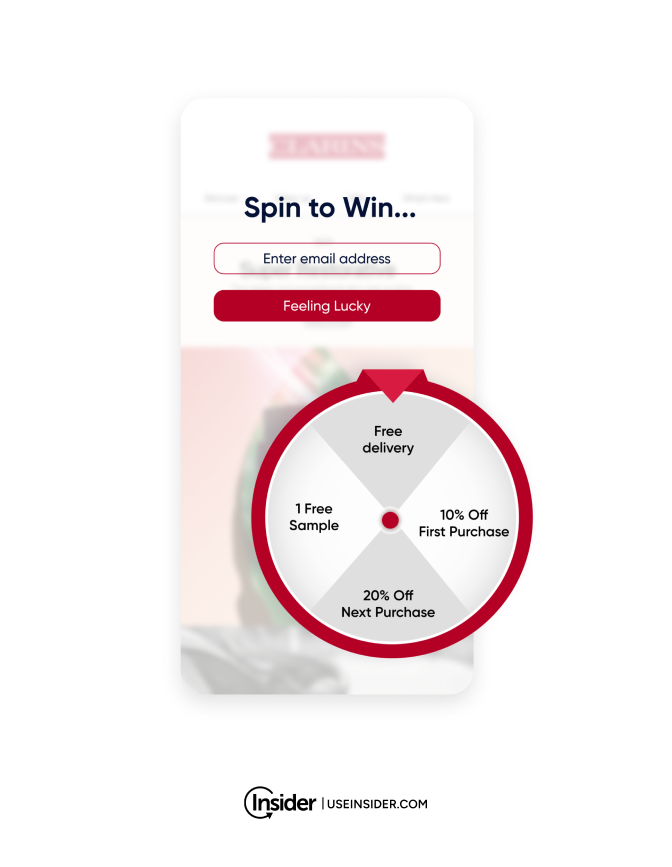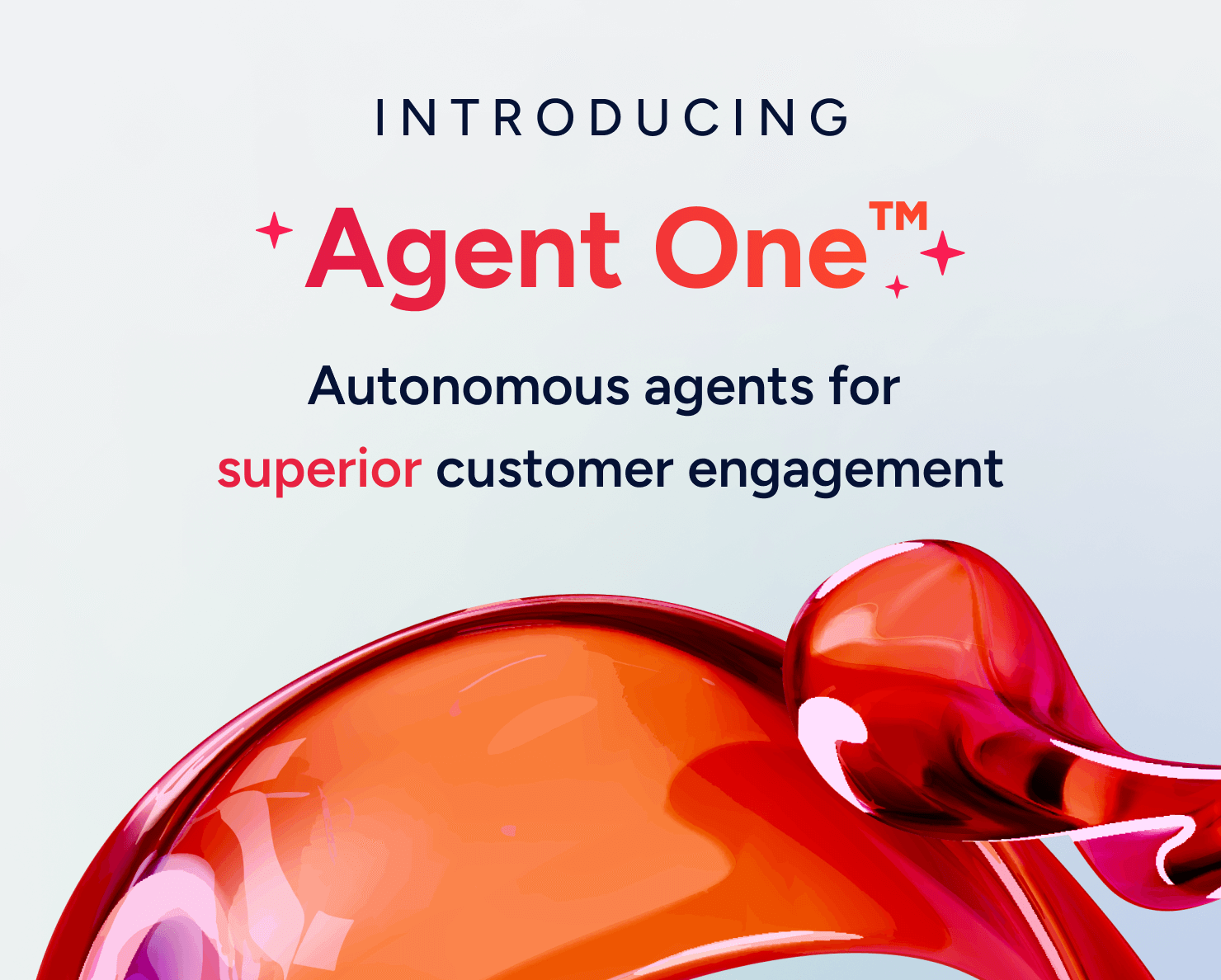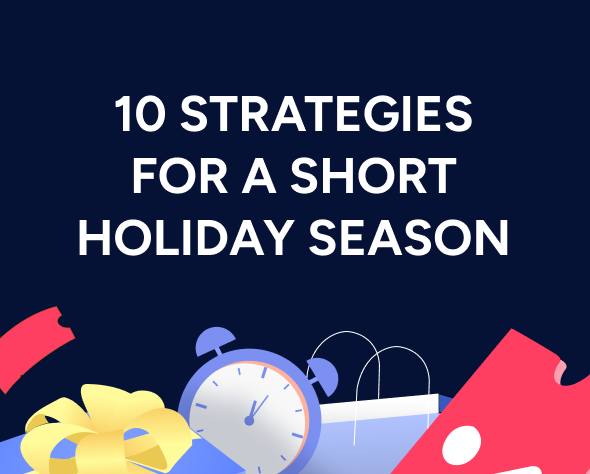Cookieless future 101: Everything you need to know
It’s no secret that third-party cookies are on their way out, thanks mainly to browsers like Google, Safari, and Firefox clamping down on their use. These cookies, which have been the backbone of online tracking for over two decades, are slowly but surely being deprecated.
Updated on 12 Mar 2024
Despite over four years of warning, many marketers are still unprepared for the upcoming shift. In fact, 75% still rely heavily on third-party cookies in their marketing strategies. If that’s you, it’s time to reevaluate, and our blog is here to help.
Read on to learn more about the cookieless future, discover what’s caused it, why you need to act, and most importantly, how to continue delivering personalized, targeted customer experiences without relying on third-party data.
Why the shift away from third-party cookies?
We’ve been talking about the shift away from third-party cookies for years. In fact, it was first mentioned by Google in February 2020. However, the countdown is now officially on, and it’s being driven by a fundamental shift towards prioritizing and safeguarding customer privacy.
Major web browsers have initiated these changes in response to a growing wave of concern from internet users. Users are becoming increasingly vocal about wanting more control over their online data and a heightened sense of data security.
Additionally, stringent data privacy regulations like GDPR and CCPA have reinforced the importance of respecting user privacy. Businesses must now adhere to these regulations; non-compliance can lead to substantial financial penalties.
To sum it up, the gradual decline of third-party cookies is the latest response to customers’ evolving expectations and demands, as well as the legal framework now governing data protection.
What happens if I don’t act?
If you’re unsure whether the demise of third-party cookies will impact your business, here are five reasons why you need to prepare for life without them:
- Loss of data accuracy: For many, third-party cookies are vital for data collection and analysis, enabling you to track user behavior, preferences, and interactions across various websites. Without these cookies, you could lose the accuracy and granularity of available data and make decisions based on incomplete or outdated information.
- Reduced targeting precision: If you don’t prepare, the loss of cookies will mean you have less refined tools for identifying and reaching your desired audience. Advertisements and campaigns may become less relevant to consumers, resulting in lower engagement and conversion rates.
- Adverse financial impact: Inaccurate data and less precise targeting are sure paths toward inefficient marketing spending. You may allocate resources to the wrong audience or channel, wasting budget and potentially harming ROI and ROAS.
- Loss of competitive edge: Businesses that embrace the new data landscape and adapt their strategies accordingly will have a competitive advantage over those who lag behind. Inaction can result in falling behind industry peers and losing market relevance. This loss of competitiveness can have long-term consequences on a company’s growth and sustainability.
- Customer trust and data privacy: Inaction can damage a company’s reputation as customer privacy concerns continue. Failing to address data privacy issues and continue business as usual proactively may lead to public backlash and regulatory penalties, harming brand image and customer trust.
The immediate effects of the demise of third-party cookies
While the above impacts will be more long-term, here’s how the demise of third-party cookies will impact your day-to-day immediately as a marketer and an internet user.
For internet users:
With browsers implementing stricter privacy measures and limiting third-party cookies, internet users will experience a noticeable change. They will encounter fewer personalized ads and less cross-site tracking. While this shift may enhance their online privacy, it’s also likely to lead to reduced ad relevance and potentially less engaging user experiences. As marketers, it’s essential to be aware of these changes in user behavior and preferences.
For marketers:
The immediate impact is palpable. The tools and methods that have long been relied upon for targeting, retargeting, and data analysis are undergoing a transformation.
As we’ve mentioned, the strategies that were once highly effective may now require adjustments—your ability to track and understand customer behavior has to change if it hasn’t already. Marketers must adapt quickly and look for alternative approaches to maintain campaign effectiveness and engagement with their target audience.

How do I personalize without third-party data?
Convinced you need to act? The good news is that the end of third-party cookies doesn’t mean the end of hyper-targeted, personalized marketing. In this next section, we’ll introduce how marketers can leverage first-party data to build higher-performing campaigns than ever before.
The importance of first-party data in a cookieless future
First-party data comprises insights from your audience or customers, including interactions on your website, mobile apps, and email subscriptions. It’s uniquely tied to your brand, offering trustworthiness and authenticity. In contrast to third-party cookies, which often rely on external sources, your customers willingly provide first-party data, establishing a foundation of trust and transparency in your relationship with them.
First-party data is also compliant with data privacy regulations like GDPR and CCPA. Unlike third-party cookies that track user behavior across the web without explicit consent, engaged customers voluntarily share first-party data.
Leveraging this data allows for personalized marketing efforts, improved customer experiences, and informed decision-making, ultimately empowering marketers to navigate the evolving data landscape confidently and maintain data privacy and compliance.
Leading global brands are already finding other innovative ways to gather first-party data. Discover how Clarins increased lead capture by 45% using a gamification template to engage its website visitors.

How do I use first-party data to prepare for a cookieless future?
- Focus on data-driven value
Without third-party cookies, the quality of your first-party data is critical. Shift your focus from merely collecting data to deriving actionable insights from it. Invest in advanced analytics and data platforms to extract meaningful information. Use these insights to make informed decisions, create targeted campaigns, and improve customer experiences. Your customers have willingly provided you with data—it’s up to you to use it strategically to add value to your customers’ journeys.
- Prioritize privacy and trust-building
Customer trust is non-negotiable. You need to prioritize privacy by implementing stringent data protection measures. Communicate your data usage policies to customers clearly, assuring them that their information is handled carefully and respectfully. This transparency will help build trust and set you apart from others who fall behind in their data management.
💡Remember, compliance with data privacy regulations is crucial to avoid hefty fines and demonstrate your commitment to ethical data practices.
- Invest in data platforms and server-to-server integrations
As a marketer, investing in a robust Customer Data Platform (CDP) is crucial to navigate these changes successfully. A CDP, like Insider, will centralize and analyze first-party data, providing a more comprehensive view of customer behavior across channels. Additionally, connecting systems via server-to-server enables reliable data sharing and accurate attribution, compensating for the limitations posed by the decline of third-party cookies.

Are there any alternative personalization strategies?
Personalization doesn’t have to be synonymous with data-driven targeting. While first-party data is necessary for data-driven personalization, several effective approaches exist to personalize user experiences without individual data.
- Timed promotions: One data-independent personalization strategy is to display timed promotions to showcase seasonal offers. For example, during the holiday season, you can present festive-themed banners, discounts, or product recommendations to all website visitors. Instead of individual data, this approach will align with broader seasonal trends and appeal to a wider audience.
- Conversion trigger templates: These templates can be activated based on specific user actions or site behaviors, such as time spent on a page, items added to the cart, or the number of pages viewed. When a user reaches a predefined trigger, a personalized message or offer can be displayed onsite, enhancing their overall experience without requiring extensive user data.
- Anonymous user profiles: Create anonymous user profiles based on behavioral data rather than personally identifiable information. You can categorize users into segments with shared interests or preferences by analyzing on-site interactions, such as clicks, page views, and session duration. Then, tailor content or recommendations to suit these segments, providing a personalized experience without compromising privacy.

To keep personalizing, you need to prepare
The cookieless future is inevitable, but it offers opportunities for marketers to build stronger customer relationships and collect high-quality data. As we move towards the 2025 deadline, the time to prepare is now.
Discover how Insider is helping marketers worldwide overcome third-party cookies to deliver personalized strategies with first-party data and beyond. If you want to continue creating consistent, customized omnichannel experiences that drive loyalty, increase acquisition, and boost revenue, book a demo with one of our growth experts.



















